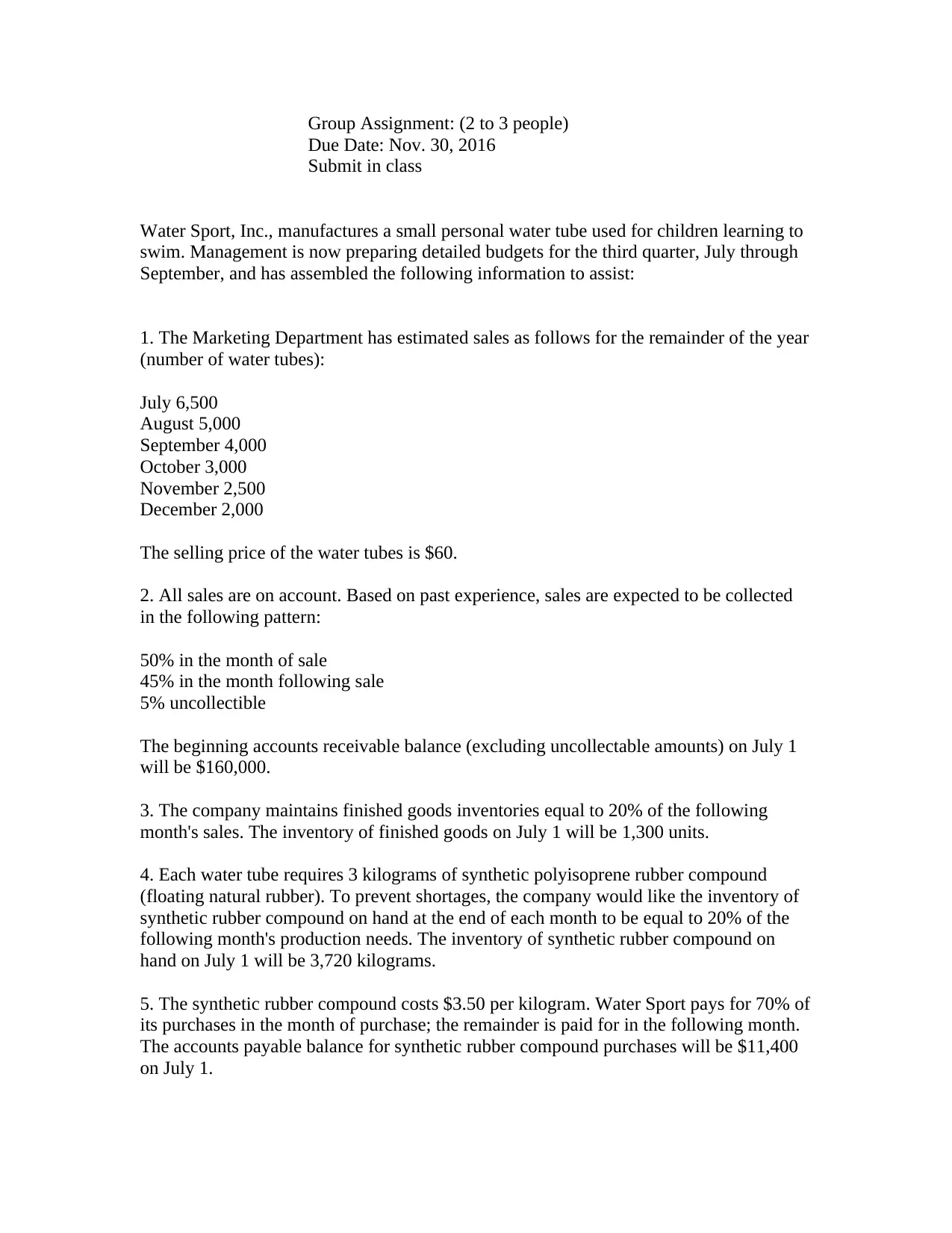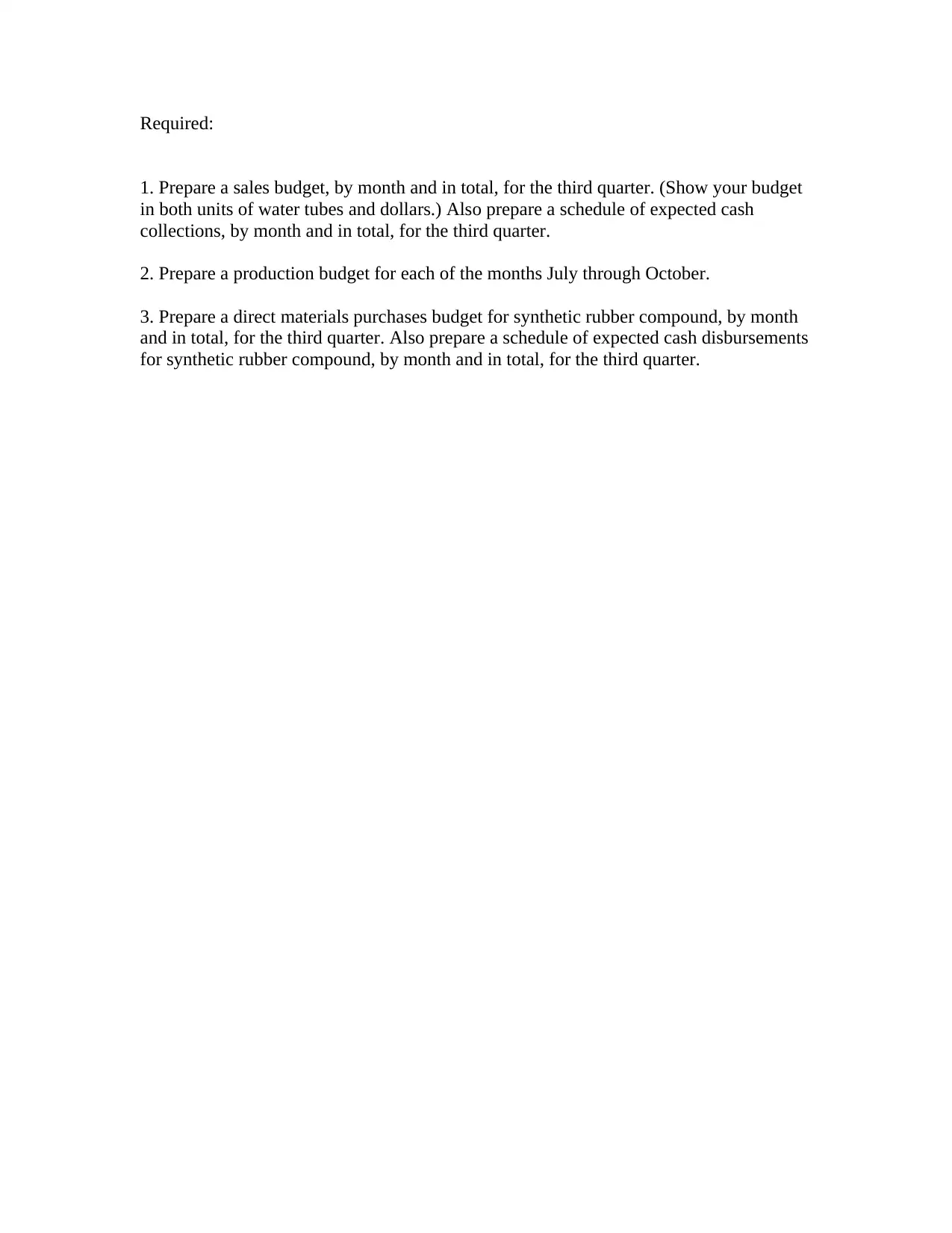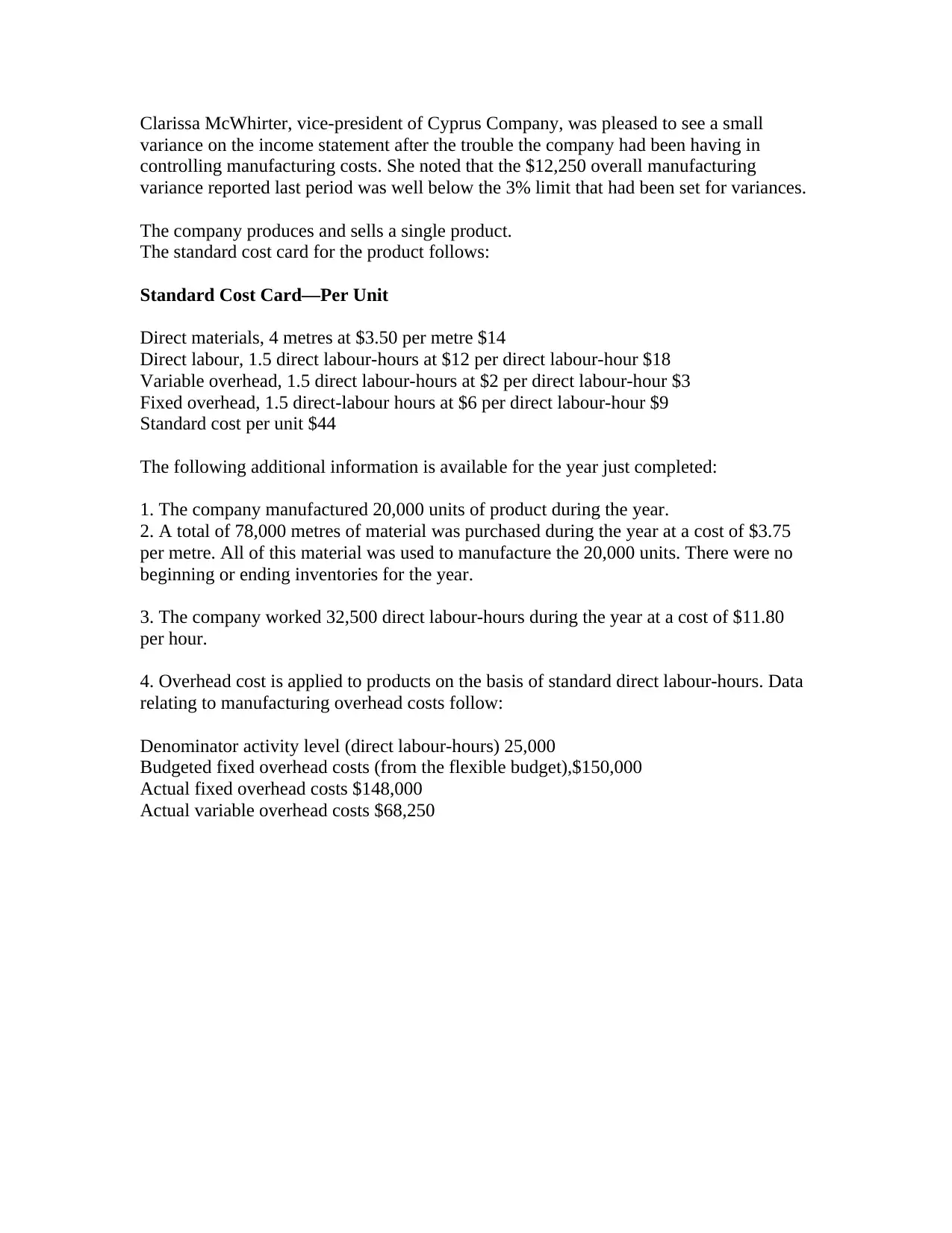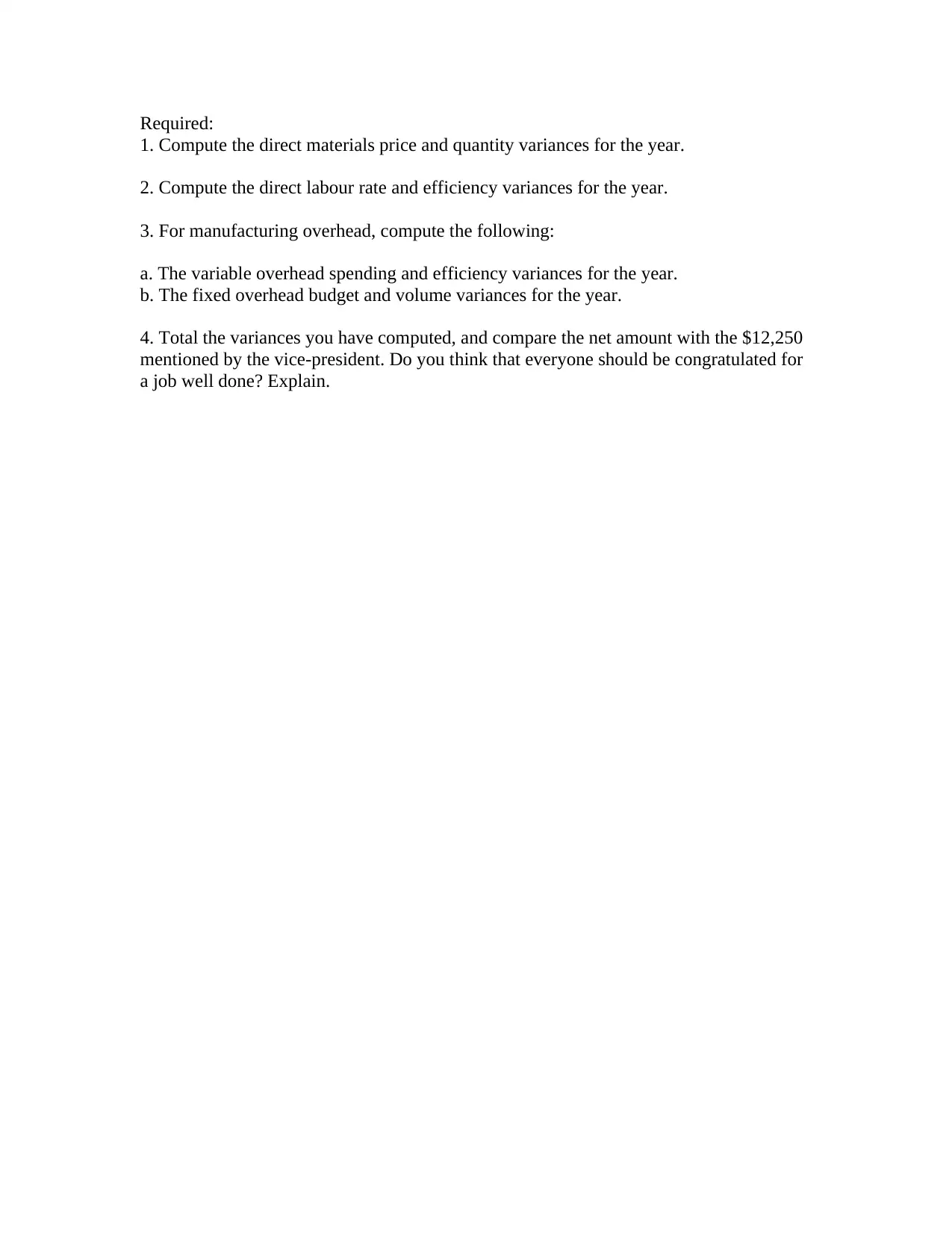Group Budgeting & Variance Analysis Project
VerifiedAdded on 2019/09/16
|4
|833
|191
Project
AI Summary
This group assignment focuses on budgeting and variance analysis within a business context. Students are tasked with preparing a comprehensive set of budgets, including sales, production, direct materials purchases, and cash budgets for Water Sport, Inc., a manufacturer of personal water tubes. The assignment requires calculating expected cash collections and disbursements. The second part involves analyzing variances for Cyprus Company, including direct materials price and quantity variances, direct labor rate and efficiency variances, and variable and fixed overhead variances. Students must compute these variances, reconcile them with the overall variance reported, and assess the company's performance. The assignment tests students' understanding of budgeting techniques, cost accounting principles, and variance analysis, allowing them to apply these concepts to real-world business scenarios.
1 out of 4







![[object Object]](/_next/static/media/star-bottom.7253800d.svg)